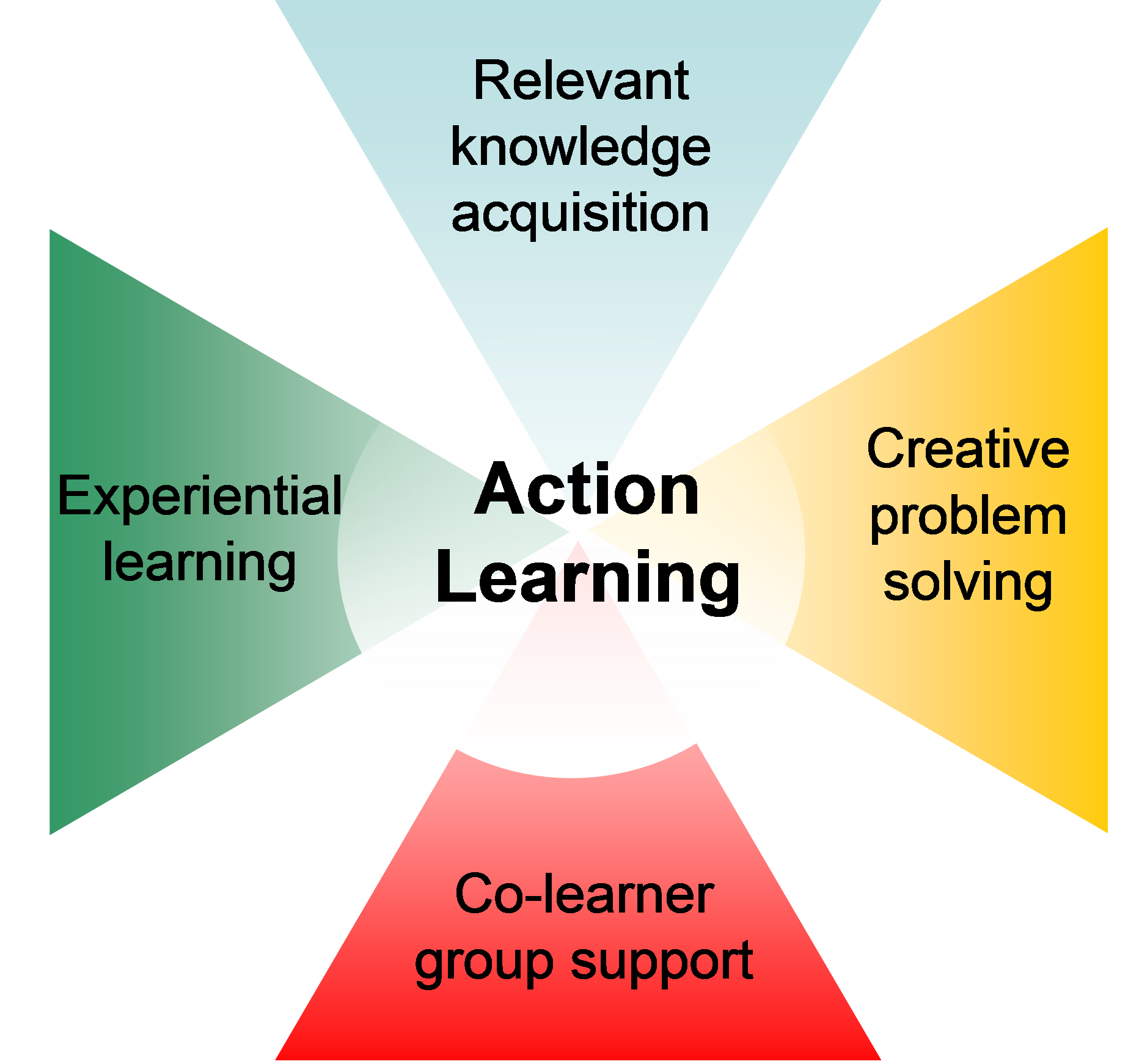Action Learning Sets
Our Approach to Action Learning

We believe that Action Learning involves learning in three parallel dimensions:
- learning about the problem being examined;
- learning about yourself;
- and, learning about the process of learning.
Action learning provides a safe, supporting and challenging environment characterised by trust and confidentiality, where set members work on issues and solve problems through a process of reflection and action.
The four main activities involved (as outlined in the diagram), when performed effectively, create a synergy which enables action learning to take place. In other words, the sum of the parts is greater than the individual component activities.

Overview of learning set meetings
At learning set meetings, each participant describes his / her issue or problem and progress in detail. Typically each member will address the following questions:
- What have I done (or not done) in respect of this issue since the last meeting?
- What can I learn from this?
- What do I want to do by the next meeting?
- What is the best way of going about this?
All members become involved in considering each others’ issues. However, each individual retains responsibility for their own issue.
Ensuring the success & effectiveness of a learning set
In our experience, there are a number of critical conditions which ensure the success and effectiveness of a learning set, these are:
- Members meet as peers and establish the learning environment within which they each take ownership for how learning takes place.
- Each member is committed to the learning set process and brings their own issues and problems which form the basis for the learning.
- The learning set provides its members with a safe environment that encourages reflection, exploration and risk-taking as well as the opportunity to get regular challenge and support from a group of peers. Typically, this will be underpinned by clear ground-rules such as: trust; commitment; personal safety; encouragement of reflection, exploration and risk-taking; and, regular review of progress.
- Reflective learning and practice in the set is directly transferable to the workplace.
- The facilitator contributes by guiding the process and by engendering a climate in which members hold themselves and others to account for actions and for the action learning process itself.
- The learning set comprises between five and eight people who are committed to meeting at pre-set regular intervals. Meeting over such a period provides participants with sufficient time for diagnosis, action and reflection.
The practical power of action learning
Our experience of action learning has reinforced our conviction about the practical power of action learning. Effective action learning sets provide participants with a truly creative learning environment in which they can:
- Share insights and learn from each other.
- Create new links and strengthen existing relationships – across organisational systems and with other partners.
- Network and understand more about their mutual roles and challenges – thus benefiting collaborative working.
- Have space and time to consider work-related issues and come up with new ways of doing things.
“Taking one or more crucial organisational problems and in real time analysing their dynamics; implementing proposed solutions derived from the constructive criticisms of colleagues; monitoring results; and through being held responsible for these actions, learning from the results so that future problem solving and opportunity taking is improved”.
